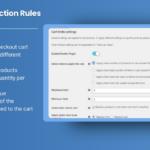In the world of eCommerce, managing user access and permissions is crucial for running a smooth and efficient online store. WooCommerce, a popular WordPress plugin, offers a flexible system for handling different user roles. By understanding and utilizing WooCommerce user roles, you can better control what your users can see and do on your site. This blog will delve into the various WooCommerce user roles, their capabilities, and how you can customize them to suit your needs.
What Are WooCommerce User Roles?
User roles in WooCommerce are predefined sets of permissions that determine what different users can access and modify within your store. By assigning roles, you can manage who can perform specific tasks, ensuring that each user has the appropriate level of access. Here’s a closer look at the default WooCommerce user roles and their capabilities:
- Customer
- Role Description: The Customer role is automatically assigned to users who make a purchase on your store. This role is primarily designed for managing personal accounts and orders.
- Capabilities:
- View and manage their own orders and account details.
- Access order tracking and history.
- Edit their personal information and address.
- Shop Manager
- Role Description: The Shop Manager role is designed for users who need access to most administrative functions within WooCommerce but not all backend settings.
- Capabilities:
- Manage orders, products, and customers.
- Edit and publish products.
- View and generate reports.
- Manage WooCommerce settings.
- Administrator
- Role Description: The Administrator role has the highest level of access. This role can manage all aspects of the WordPress site, including WooCommerce settings and user roles.
- Capabilities:
- Complete control over all settings and configurations.
- Add or remove plugins and themes.
- Modify site settings and manage all user roles.
- Editor
- Role Description: While not a WooCommerce-specific role, the Editor role is a default WordPress role that can also be used in WooCommerce contexts.
- Capabilities:
- Create, edit, and delete posts and pages.
- Moderate comments and manage categories and tags.
- Author
- Role Description: Another default WordPress role, the Author role can be assigned to users who need to create and manage their own content.
- Capabilities:
- Write, edit, and publish their own posts.
- Upload files.
- Contributor
- Role Description: Contributors can write and manage their own posts but cannot publish them.
- Capabilities:
- Write and edit posts but cannot publish them.
- Cannot upload files.
- Subscriber
- Role Description: The Subscriber role is the most basic role with minimal permissions.
- Capabilities:
- Manage their profile and personal information.
- View and comment on posts (if allowed).
Customizing User Role WooCommerce
Sometimes, the default user roles don’t fit all scenarios. Fortunately, WooCommerce allows you to customize user roles to meet specific needs. Here’s how you can manage and customize roles:
- Use a Role Management Plugin
- Plugins like “User Role Editor” or “Members” allow you to create, modify, and manage user roles and capabilities. These plugins provide an intuitive interface for adjusting permissions without needing to code.
- Create Custom Roles
- If the default roles don’t meet your needs, you can create custom roles with specific capabilities. For example, you might create a “Product Manager” role that only has access to product-related tasks.
- Modify Existing Roles
- You can adjust the permissions of existing roles to better fit your requirements. For example, you might want to give Shop Managers additional permissions or restrict Administrators from certain tasks.
- Assign Roles to Users
- Assign roles to users based on their responsibilities. Ensure that each user has the appropriate level of access to perform their job effectively without compromising the security or functionality of your store.
Why Managing User Roles Is Important
- Security
- Proper role management helps protect sensitive data and functions. By limiting access, you reduce the risk of unauthorized changes or data breaches.
- Efficiency
- Assigning roles according to responsibilities ensures that users can focus on their tasks without unnecessary clutter or confusion.
- Customization
- Tailoring roles to fit your business needs allows for greater flexibility and control over your store’s operations.
- Improved User Experience
- Users with appropriate access levels can perform their tasks more efficiently, leading to a smoother workflow and better overall experience.
Conclusion
Understanding and managing WooCommerce user roles is essential for maintaining an organized and secure online store. By utilizing the default roles effectively and customizing them as needed, you can ensure that your store operates smoothly and securely. Whether you’re managing a small shop or a large eCommerce site, proper role management helps streamline operations and enhance user experience.


